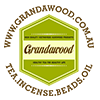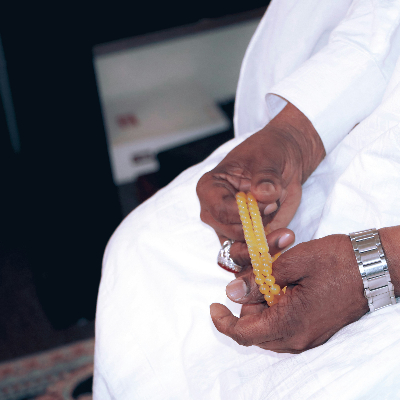Menu
-
-
F.A.Q
- How to identify genuine agarwood chip, natural or cultivated
- How to identify oil injection / absorption fake agarwood beads
- How to know if there are more than one oil in your oil
- How to make your wood bracelet or mala darker
- How to tell if an Agarwood bead sinks WITHOUT sinking it under water?
- How does back flow incense work and how do you burn it?
- Where to start if you don't know what agarwood is ?
- Why are you losing money if you buy seeds and plants?
- Which agarwood incense should I choose?
- Frequently Asked Questions
- Agarwood Related Articles
- Shipping
-
SHOP - Agarwood
-
SHOP - Other Fragrant Wood
-
SHOP - Incense Holder and Burner
-
- FREE Oud Oil guide
- Testimonials
- "Why did you buy this?"
- Contact us
- About Us
- +61430284329
- Login
-
English


Ants and Agarwood
Understanding Cultivated Agarwood: Not All "Artificial" is Inferior
You might have come across terms like "artificial oud," "artificial farming practices," or "man-made oud" when describing cultivated agarwood. These terms can sometimes give the impression that cultivated agarwood is of lower quality. However, this is a misconception.
Agarwood is a resin produced by Aquilaria trees in response to physical injury or pathogen attacks. This resin contains sesquiterpenes, which are produced by the tree under stress. To create agarwood, the tree must be wounded. In the wild, this process can take over 30 years.
The crucial factor is not the age of the Aquilaria tree but the duration of the infection. Some Aquilaria trees in the wild can be over 100 years old and perfectly healthy, making them useless for agarwood production. Aquilaria wood is very soft and not suitable for timber.
Wounding Aquilaria trees to produce agarwood is both an art and a science. Previously, we discussed the Fungi Inoculation method. Today, we will explore another fascinating method: using ants.
Ants and Agarwood Production
Not all ants are suitable for this method. The specific genus of ant used is a closely guarded secret. Here is how it works:
Ants are carefully selected and raised. They are fed a variety of selected vegetables. Once consumed, the ants secrete a special golden liquid. This liquid is then mixed with sugar cane, honey, coconut oil, and corn husk to create a special blend. This blend acts as a catalyst when introduced to the wounds of Aquilaria trees, speeding up the agarwood creation process.
While there are many genera of ants associated with Aquilaria trees, research on their role in agarwood production is limited. However, we know that some ant species engage in farming practices, much like humans.
Ant Farming Practices
Did you know that ants also practice farming? Some ant species grow insects and fungi for food. For example, leafcutter ants cultivate fungi from the genus Gongylidia. These ants clip leaves and inject them with a fungal secretion, converting the leaves into an edible mushroom form.
Using Ants to Create Agarwood
Based on this behaviour, ants can be cultivated in host trees to produce gongylidia. This is then collected and processed into a liquid form. This fungal liquid is mixed with special ingredients to create an "ant cocktail," which is used to inoculate wounded Aquilaria trees, enhancing agarwood production.
In short, these ants do not live in Aquilaria trees. Instead, they are bred in different host trees with vegetables and leaves to produce gongylidia. The collected gongylidia are processed into a liquid form, mixed with ingredients like coconut oil and corn husk, and then used to inoculate the Aquilaria trees.
Misconceptions About "Artificial" Oud
Referring to cultivated agarwood as "artificial" is misleading. Much like farming rice or fruits, cultivating agarwood is a way to meet demand sustainably. The term "artificial" suggests inferiority, but cultivated agarwood is produced by mimicking natural processes.
Methods That May Not Work
Some ant species, like Rhopalomastix and Melissotarsus, produce silk to seal tree wounds, which might not be beneficial for agarwood production. These ants farm scale insects and fungi for food and seal off entrances when the tree is damaged. Their tunneling behaviour might actually heal wounds over time, making agarwood induction methods less effective.
Conclusion
Current methods for producing agarwood from Aquilaria trees include drilling holes in the trunk, which can sometimes favour ant colonies. However, understanding and utilising the natural behaviour of ants and other organisms can enhance agarwood production sustainably.
By recognising the scientific art behind agarwood cultivation, we can appreciate that "man-made" does not mean inferior. Instead, it represents a sustainable approach to meet growing demand.
Reference
https://www.antwiki.org/wiki/Melissotarsus
Yong, G., Matile-Ferrero, D. & Peeters, C. Rhopalomastix is only the second ant genus known to live with armoured scale insects (Diaspididae). Insect. Soc. 66, 273–282 (2019). https://doi.org/10.1007/s00040-019-00686-z
1 Response
Leave a comment
Comments will be approved before showing up.
Also in News

What is Tasbih? The Deep Meaning of Subhan Allah and the Role of Prayer Beads
November 09, 2025 4 min read


geraldine ti vellesco
August 16, 2023
hi! i hope everything was good, Ants can produce fungi for agarwood